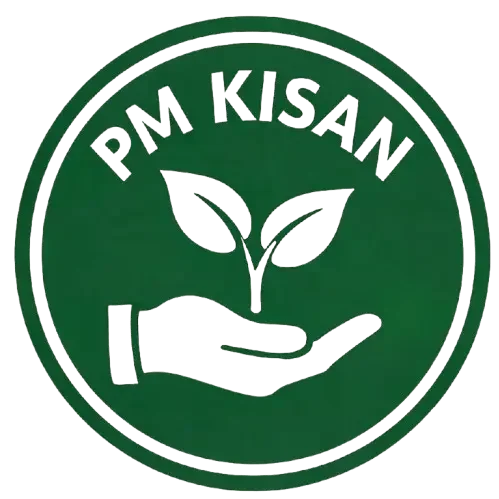Ladki Bahin Yojana 2025: Eligibility, eKYC, & Status Check
In rural India, a young mother named Savita used her PM Kisan payment to open a bank account for her newborn daughter. Later, a grant from the Ladki Bahin helped fund her daughter’s schooling, transforming her future. This scheme is state-specific initiative in India, supports families in securing better health, education, and financial stability for their daughters. By complementing schemes like PM Kisan, which provides farmers with ₹6,000 annually through the PM Kisan Portal, these programs create a robust support system for rural families, particularly for empowering girls.
What is Ladki Bahin Yojana?
It is a welfare program aimed at promoting gender equality and supporting the growth of girl children across India. Implemented with variations across states, it offers financial assistance, educational incentives, and health benefits to reduce gender disparities, prevent early marriages, and encourage investment in girls’ education and well-being. By aligning with schemes like PM Kisan, which provides income support to farmers, families can combine resources to ensure their daughters thrive.
For example, a farmer receiving funds through the PM Kisan Portal can use those payments alongside Ladki Bahin benefits to cover school fees, uniforms, or health expenses, creating a stronger safety net for their daughters.
Key Benefits of Ladki Bahin Yojana
The Ladki Bahin Yojana delivers a range of benefits tailored to empower girls and ease family burdens:
- Financial Grants for Newborns: Many states provide a one-time grant or deposit into a savings account upon a girl’s birth to support early expenses.
- Educational Scholarships: Scholarships or fee waivers for primary, secondary, or higher education reduce dropout rates and promote academic success.
- Health and Nutrition Support: Programs include free vaccinations, nutritional supplements, and maternal healthcare to ensure healthy development.
- Conditional Cash Transfers: Payments linked to milestones like school attendance, immunizations, or health check-ups incentivize long-term care.
- Long-Term Savings Plans: Some schemes offer savings bonds or fixed deposits that mature when the girl reaches adulthood, usable for education or other approved purposes.
- Community Awareness Initiatives: Outreach programs educate families on girls’ rights, discourage child marriage, and promote female literacy.
By integrating with PM Kisan benefits, accessible via the PM Kisan Portal, families can allocate funds strategically, ensuring both immediate needs and long-term goals for their daughters are met.
Eligibility Criteria for Ladki Bahin Yojana
Eligibility for the Ladki Bahin Yojana varies by state but typically includes:
- Residency: Applicants must be residents of the state or district implementing the scheme.
- Age of Beneficiary: Benefits often target newborn girls or those under 18 years, depending on the specific program.
- Income Criteria: Some states limit eligibility to Below Poverty Line (BPL) families, while others offer universal access for all girls.
- Documentation: Valid documents include the child’s birth certificate, Aadhaar card (child or parent), and bank account details.
- School Enrollment: For education-related benefits, girls must be enrolled in a government or recognized school with regular attendance.
How to Apply for Ladki Bahin Yojana
The application process is designed to be accessible, with slight variations by state:
- Gather Documents: Collect the child’s birth certificate, Aadhaar cards (child or parents), proof of residence (e.g., ration card), and bank account details for Direct Benefit Transfer (DBT).
- Access the Application Platform: Apply online via the state’s welfare portal or visit local Anganwadi centers, Integrated Child Development Services (ICDS) offices, or block welfare offices.
- Complete the Application: Fill out the form with accurate details, attach required documents, and submit.
- Verification Process: Authorities will verify documents, school enrollment, and other criteria.
- Link Bank Account: Ensure the bank account is Aadhaar-seeded for DBT, similar to the process used for PM Kisan payments.
- Track Application: Use the provided reference number or online portal to monitor status. Helplines and Common Service Centres (CSCs) can assist with eKYC or form submission.
- Complete Guide: For better Guide about this scheme visit official portal
Required Documents
To ensure a smooth application process, prepare:
- Child’s birth certificate
- Aadhaar card (child or parent/guardian)
- Proof of residence (e.g., ration card, electricity bill)
- Bank passbook or cancelled cheque for DBT
- School enrollment certificate (for education-linked benefits)
- Income certificate (if required by the state)
Processing Timelines and Payment Modes
- Verification: Document and eligibility checks typically take 7–30 days, depending on local administrative efficiency.
- Payment Disbursement: One-time grants are often transferred within 30–60 days of approval. Scholarships may be disbursed annually or per semester.
- Payment Method: Funds are delivered via Direct Benefit Transfer (DBT) to Aadhaar-linked bank accounts, mirroring the PM Kisan payment process.
Ensure your bank account is active and Aadhaar-seeded to avoid delays, a step familiar to PM Kisan beneficiaries.
Monitoring and Grievance Redressal
Most states provide an online portal or helpline to track application status. If issues arise:
- Verify document accuracy and resubmit if needed.
- Visit the local welfare office with original documents for re-verification.
- File a grievance via the state portal or helpline, escalating to district authorities if unresolved.
- Keep records of all submissions, reference IDs, and communications.
For PM Kisan issues, the PM Kisan Portal offers similar tracking and grievance options, ensuring consistency across schemes.
Why Ladki Bahin Yojana Matters
The Ladki Bahin Yojana goes beyond financial aid, addressing systemic barriers:
- Boosts Education: Encourages school enrollment and reduces dropout rates, with studies showing a 10–15% increase in female literacy in participating regions.
- Prevents Child Marriage: Ties benefits to continued education, reducing early marriages by up to 20% in some states.
- Improves Health: Links to maternal and child healthcare improve nutrition and immunization rates.
- Promotes Financial Security: Savings schemes provide funds for higher education or vocational training.
When combined with PM Kisan funds, accessible via the PM Kisan Portal, families can create a holistic plan for their daughters’ futures, from nutrition to education.
Practical Tips for Applicants
- Apply Early: Many benefits have time-sensitive windows, especially for birth-related grants.
- Ensure Aadhaar Seeding: Link bank accounts to Aadhaar for seamless DBT, as required for both Ladki Bahin and PM Kisan.
- Retain Copies: Keep copies of forms, receipts, and reference numbers.
- Attend Awareness Programs: Local Anganwadi or school meetings provide updates on deadlines and benefits.
- Use CSCs: Common Service Centres assist with online submissions and eKYC, especially in rural areas.
Success Stories and Community Impact
In Maharashtra, village cooperatives have used Ladki Bahin grants to fund community tutoring programs, increasing girls’ secondary school retention by 15%. In Rajasthan, combining PM Kisan and Ladki Bahin funds has enabled families to purchase school supplies and uniforms, boosting attendance rates.
Staying Updated
- Visit your state’s women and child welfare website or the PM Kisan Portal for updates.
- Follow local panchayat or Anganwadi announcements.
- Join community WhatsApp groups for real-time information on deadlines and benefits.
Frequently Asked Questions (FAQs)
Conclusion: Building Brighter Futures
When Meera’s family received a Ladki Bahin education grant, they could afford books and uniforms, leading her to excel in school. By combining PM Kisan support, accessed via the PM Kisan Portal, with Ladki Bahin benefits, families can ensure their daughters’ health, education, and financial security. Prepare documents, link Aadhaar to bank accounts, and use local welfare centers or CSCs to apply—empowering your daughter starts with these steps.

